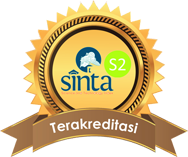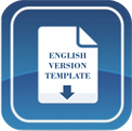The Development of Learning Media “Petuah Kimia†(A Digital Chemistry Bond Material)
DOI:
https://doi.org/10.15575/jtk.v7i1.17426Keywords:
borg and gall, chemical association, digital comics, learning mediaAbstract
The Indonesian children's literacy is still relatively low, and it has become a severe problem that the government, teachers, parents, and librarians should face. The data shows that only 10% of Indonesian children like to read a book, while most chemistry material is written in textbooks. This study aims to produce digital comics with chemical bonding material, determine comics' feasibility, and respond to readers. The research method develops the Borg and Gall model with seven stages of development without compromising the essence of the model. Meanwhile, data collection techniques are interviews, validation, and questionnaires using a Likert scale. The media and material validator has validated the product developed in this study. As a result, the media aspect has an overall score of 48 or 100%; the score belongs to the very decent criteria. The material aspect has got a score of 26 or 93% from the basic chemistry lecturers; Also, the chemistry teachers give 100%. In addition, the digital comic readers have an extensive test. Conversely, 48 respondents have been assessed with an overall score of 2753 or 90%. Hence, this percentage value relates to the very feasible category. Thus, the characteristics of this digital comic have fulfilled the material, media, language, and visual aspects; since it is included in the worthy category as an independent learning medium without replacing the role of educators.
References
Anggraeni, L., Darmawan, C., & Tanshzil, S. W. (2020, March). The Use of Comic-Based Technology: Media Cultivation of Values in the Nation Defense [Conference Presentation]. In 2nd Annual Civic Education Conference (ACEC) 2019, 428-431. https://dx.doi.org/10.2991/assehr.k.200320.081
Arroio, A. (2011). Comics As a Narrative In Natural Science Education. Western Anatolia Journal Of Educational Science, 93–98. Retrieved from http://web.deu.edu.tr/baed/giris/baed/ozel_sayi/93-98.pdf
Arsyad, A. (2015). Media Pembelajaran. Jakarta: Rajawali Press.
Azhar, A. (2013). Media Pembelajaran. Jakarta: PT Rajagrafindo Persada.
Bonneff, M. (1998). Sejarah dan Perkembangan Komik Indonesia. Jakarta: Kepustakaan Populer Gramedia.
Borg, W. R., Gall, M. D. & Gall, J. P. (2003). Educational Research an Introduction Seventh Edition. Edited by C. Tridente. New York: Longman.
Chang, R. (2005). Kimia Dasar Konsep-Konsep Inti. Penerjemah: Suminar Setiati Achmadi. Jakarta: Erlangga.
Di Raddo, P. (2006). Teaching chemistry lab safety through comics. Journal of Chemical Education, 83(4), 571. https://doi.org/10.1021/ed083p571
Gabel, D. (1998). The complexity of chemistry and implications for teaching. International handbook of science education, 1(1), 233-248. Retrieved from https://www.scinapse.io/papers/101460816
Hadi, W. S., & Dwijananti, P. (2015). Pengembangan komik fisika berbasis android sebagai suplemen pokok bahasan radioaktivitas untuk sekolah menengah atas. UPEJ Unnes Physics Education Journal, 4(2). Retrieved from https://journal.unnes.ac.id/sju/index.php/upej/article/view/7431
Herawati, D. D., Wahyuni, D., & Prihatin, J. (2014). Penerapan Model Pembelajaran Kooperatif Tipe NHT (Numbered Head Together) Dengan Media Komik pada Materi Pengelolaan Lingkungan Guna Meningkatkan Motivasi Dan Hasil Belajar (Siswa Kelas VII C SMP Negeri 1Semboro Jember). Pancaran Pendidikan, 3(3), 73-82. Retrieved from https://jurnal.unej.ac.id/index.php/pancaran/article/view/764
Hurlock, Elizabeth B. (1980). Psikologi Perkembangan: Suatu Pendekatan Sepanjang Rentang Kehidupan. Jakarta : Gramedia.
Locke, S. (2005). Fantastically reasonable: ambivalence in the representation of science and technology in super-hero comics. Public Understanding of Science, 14(1), 25-46. https://doi.org/10.1177/0963662505048197
Lova, Rahayu, R., Fifendy, M., & Sudirman. (2013). Pengembangan Media Pembelajaran Berupa Komik Biologi Pada Materi Sistem Pencernaan makanan untuk Siswa Kelas XI IPA. Jurnal Mahasiswa Pendidikan Biologi, 2(2). Retrieved from http://portalgaruda.fti.unissula.ac.id/index.php?ref=browse&mod=viewarticle&article=182768
Malviya, V. & Verma, J. (2010). The Impact of Internet and Digital Media on Reading Habit. Paper presented at IASLIC 24th Nation Seminar, Gorakhpur: Deen Dayal Uppadhaya Gorakhpur University.
Masdiono, T. (2014). 14 Jurus Membuat Komik Ver 02. Jakarta: Creative Media.
Nur'aini, I. (2005). Media Pembelajaran sebagai pembawa pesan. Mediator: Jurnal Komunikasi, 6(2), 277-290. https://doi.org/10.29313/mediator.v6i2.1196
Nurrita, T. (2018). Pengembangan media pembelajaran untuk meningkatkan hasil belajar siswa. MISYKAT: Jurnal Ilmu-ilmu Al-Quran, Hadist, Syari'ah dan Tarbiyah, 3(1), 171. http://doi.org/10.33511/misykat.v3n1.171
Nurseto, T. (2011). Membuat media pembelajaran yang menarik. Jurnal Ekonomi dan pendidikan, 8(1), 19-35. https://doi.org/10.21831/jep.v8i1.706
Pane, A., & Dasopang, M. D. (2017). Belajar dan pembelajaran. Fitrah: Jurnal Kajian Ilmu-Ilmu Keislaman, 3(2), 333-352. https://doi.org/10.24952/fitrah.v3i2.945
Purnama, U. B., Mulyoto, M., & Ardianto, D. T. (2015). Penggunaan Media Komik Digital Dan Gambar Pengaruhnya Terhadap Prestasi Belajar IPA Ditinjau Dari Minat Belajar Siswa. Teknodika, 13(2). Retrieved from https://jurnal.fkip.uns.ac.id/index.php/teknodika/article/view/6793
Rahmawati, I. (2017). Pembuatan Media Komik pada Sub Materi Metabolisme Karbohidrat untuk Siswa SMA Kelas XII. Jurnal Pendidikan dan Pembelajaran Khatulistiwa, 6(8). Retrieved from https://jurnal.untan.ac.id/index.php/jpdpb/article/view/21454
Rediarta, I. W., Sudarma, I. K., & Murda, I. N. (2014). Pengaruh Model Kooperatif Two Stay Two Stray Terhadap Hasil Belajar IPA. MIMBAR PGSD Undiksha, 2(1). Retrieved from https://ejournal.undiksha.ac.id/index.php/JJPGSD/article/view/3763
Sardiman, A. M. (2010). Interaksi dan Motivasi Belajar Mengajar. Jakarta: Rajawali Pers.
Sudjana. (2005). Metode Statistika. Bandung: Tarsito.
Sugiharti, R. (1997). Perilaku dan Kebiasaan Anak Gemar Membaca (Kasus Keluarga Perkotaan di Surabaya). Jakarta:LP3S.
Sugihartati, R. (2018). Membaca, Gaya Hidup dan Kapitalisme: Kajian Tentang Reading for Pleasure dari Perspektif Culture Studies Edisi 2. Yogyakarta: Suluh Media.
Tatalovic, M. (2009). Science comics as tools for science education and communication: a brief, exploratory study. Journal of Science Communication, 8(4), A02.
https://doi.org/10.22323/2.08040202
Tiemensma, L. (2009, August). Visual literacy: To comics or not to comics? Promoting literacy using comics [Conference Presentation]. In World Library and information congress: 75th IFLA general conference and council, 23-27. Retrieved from https://www.ifla.org/past-wlic/2009/94-tiemensma-en.pdf
Trianto. (2009). Mendesain Model Pembelajaran Inovatif-Progresif. Jakarta: Kencana Prenada Media Group
Uliyandari, M., Candra, I. N., & Sumpono, S. (2014). Analisis Tingkat Pemahaman Siswa Kelas XII IPA SMA Negeri Kota Bengkulu untuk Mata Pelajaran Kimia. Doctoral Dissertation, Faculty of Education: Universitas Bengkulu.
Ulumudin, I., Mahdiansyah & Suwardi, J. B. (2017). Buku Teks dan Pengayaan: Kelengkapan dan Kelayakan Buku Teks Kurikulum 2013 serta Kebijakan Penumbuhan Minat Baca Siswa. Jakarta: Pusat Penelitian Kebijakan Pendidikan dan Kebudayaan.
Vrabec, M., & ProksÌŒa, M. (2016). Identifying misconceptions related to chemical bonding concepts in the Slovak school system using the bonding representations inventory as a diagnostic tool. Journal of Chemical Education, 93(8), 1364-1370. https://doi.org/10.1021/acs.jchemed.5b00953
Downloads
Additional Files
Published
How to Cite
Issue
Section
Citation Check
License
Authors who publish with this journal agree to the following terms:
- Authors retain copyright and grant the journal right of first publication with the work simultaneously licensed under a Creative Commons Attribution-ShareAlike that allows others to share the work with an acknowledgement of the work's authorship and initial publication in this journal.
- Authors are able to enter into separate, additional contractual arrangements for the non-exclusive distribution of the journal's published version of the work (e.g., post it to an institutional repository or publish it in a book), with an acknowledgement of its initial publication in this journal.
- Authors are permitted and encouraged to post their work online (e.g., in institutional repositories or on their website) prior to and during the submission process, as it can lead to productive exchanges, as well as earlier and greater citation of published work (See The Effect of Open Access).








